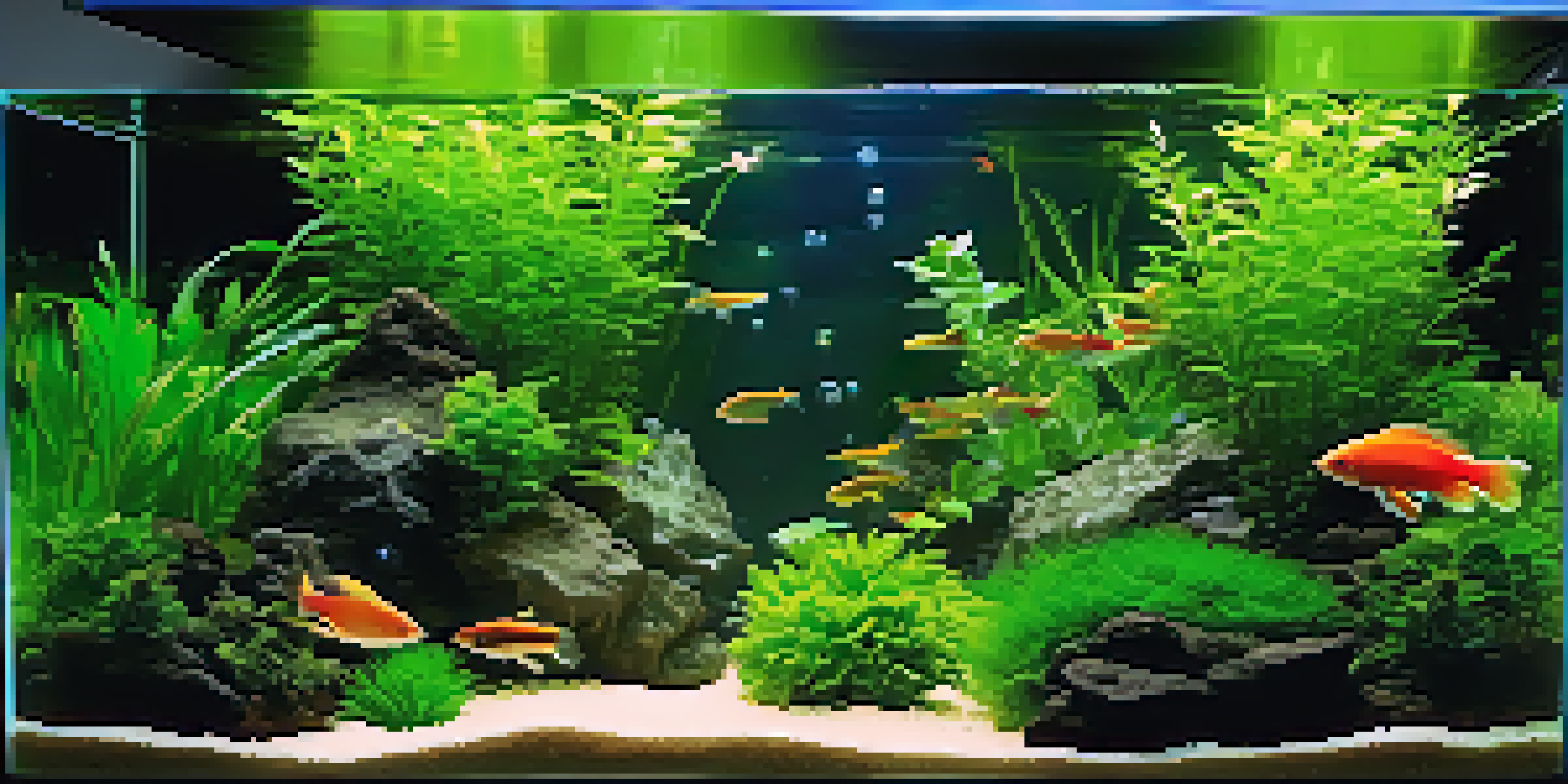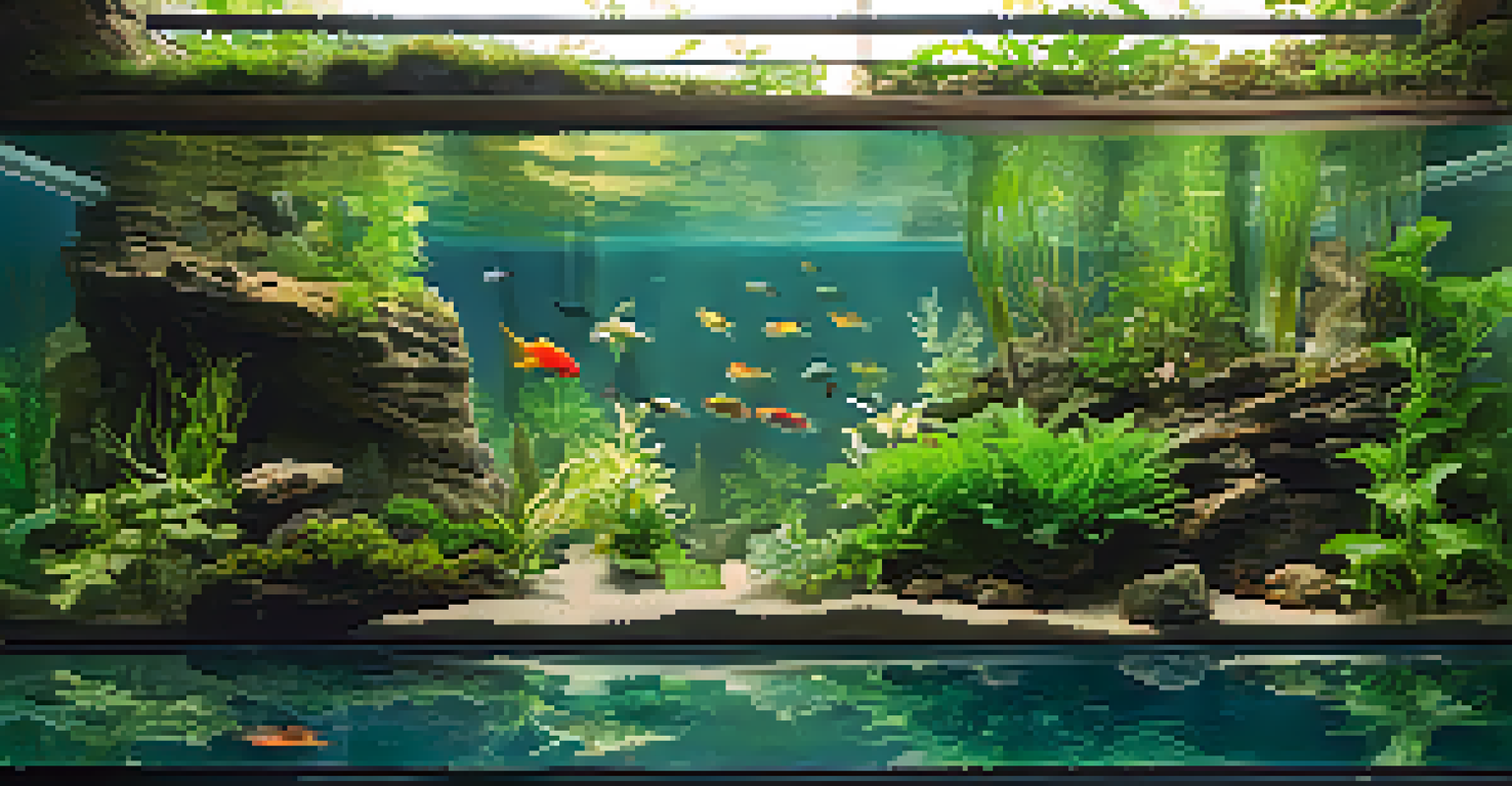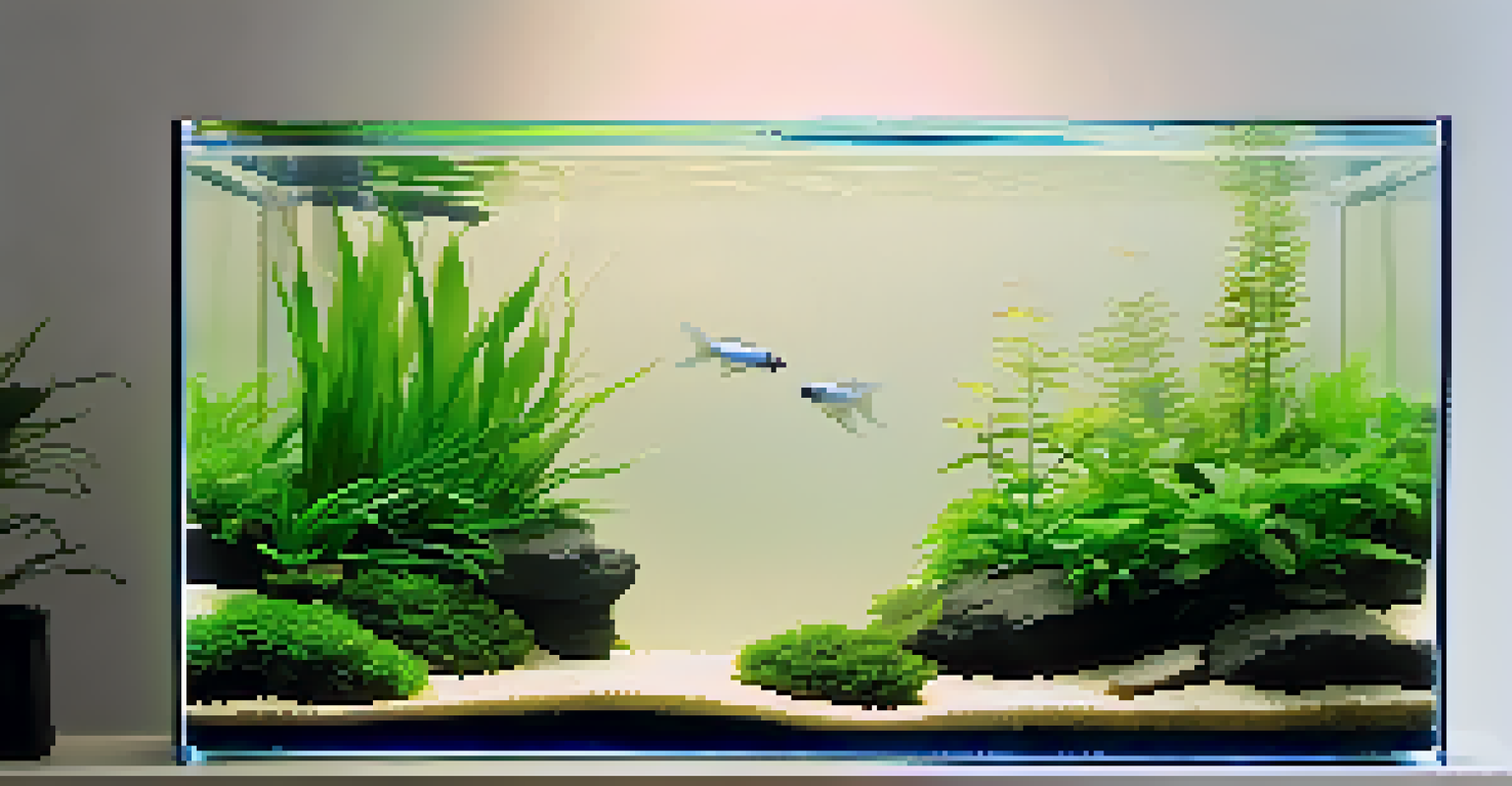Choosing the Right Aquarium Size for Aquascaping

Understanding the Importance of Aquarium Size in Aquascaping
The size of your aquarium plays a crucial role in the overall success of your aquascaping project. A well-chosen size can enhance the aesthetics and functionality of your aquatic environment. It influences everything from the types of plants and fish you can keep to how easy it is to maintain the ecosystem.
The aquarium is a world unto itself; it is a small piece of nature that can be created and maintained by anyone willing to invest time and care.
When you're planning your aquascape, consider how the dimensions will impact the layout and design. For instance, a taller aquarium might allow for vertical plant growth, while a longer tank provides more surface area for creative arrangements. Understanding these nuances helps you create a balanced and visually appealing setup.
Moreover, the aquarium size will dictate the volume of water, which affects stability in parameters like temperature and pH. A larger tank can better buffer changes, making it easier to maintain a healthy environment for your aquatic life.
Assessing Your Space: Where Will Your Aquarium Go?
Before you dive into choosing an aquarium size, take a good look at the space you have available. It's essential to measure the area where you intend to place the tank, ensuring it can support the weight and size of your future aquatic landscape. Consider not just the footprint but also the height, especially if you plan to incorporate tall plants or decorations.

Additionally, think about accessibility for maintenance tasks. An aquarium that's too high or deep might make it challenging to reach the bottom for cleaning or plant care. Finding a balance between size and accessibility will save you a lot of hassle down the line.
Choose Aquarium Size Wisely
The size of your aquarium significantly impacts the success of your aquascaping project, affecting aesthetics, functionality, and maintenance.
Lastly, factor in the visual impact. A large aquarium can be a stunning focal point in a room, but if it overwhelms the space, it might not create the intended effect. Aim for a size that complements your existing decor while still allowing for an impressive aquascape.
Choosing the Right Size Based on Your Aquascaping Goals
Your aquascaping ambitions will heavily influence the size of your aquarium. If you're planning to create a lush, plant-dominated landscape, a larger tank can offer the space needed for diverse flora. On the other hand, if you're aiming for a minimalist design, a smaller tank might be just right to keep things simple and elegant.
Aquascaping is a form of art, where the creator becomes the architect of an underwater landscape.
Think about the types of fish or other aquatic creatures you want to include as well. Some species require more swimming space and territory, which may lead you to choose a bigger aquarium. Conversely, if you're considering smaller, less active fish, a compact tank could suit your needs perfectly.
Ultimately, aligning your aquarium size with your aquascaping vision is key. Reflect on what you hope to create and choose a size that supports that goal, allowing your creativity to flourish.
Considering the Maintenance Needs of Different Aquarium Sizes
Maintenance is an essential aspect of aquascaping that is often overlooked during the planning phase. Generally, larger aquariums offer more stable environments, which can mean less frequent maintenance. However, they can also require more effort to clean and maintain due to their size.
Smaller aquariums, while easier to manage in some respects, can become unbalanced more quickly. Water quality can fluctuate rapidly, requiring diligent monitoring and regular changes to keep your aquatic life healthy. It’s crucial to weigh these considerations when selecting your aquarium size.
Consider Space and Accessibility
Assess the available space for your aquarium to ensure it fits well within your environment and allows for easy maintenance.
Think about how much time you can realistically dedicate to maintaining your aquascape. A tank that fits your lifestyle will not only provide a beautiful display but also ensure that you enjoy the process of caring for it.
Budgeting for Your Ideal Aquarium Size and Setup
Budget is undoubtedly a significant factor when choosing an aquarium size. Larger tanks, while offering more space for creativity, often come with higher initial costs for the tank itself, as well as additional equipment like filters and lighting. Understanding your financial limits can help narrow down your options.
Additionally, consider the long-term costs, such as the price of substrate, plants, and fish. A larger tank might require more materials, which can add up quickly. On the other hand, a smaller setup might allow for a more manageable budget but could limit your design possibilities.
Ultimately, striking a balance between your desired aquarium size and your budget will lead to a successful aquascaping experience. Always be realistic about what you can afford, both now and in the future as your aquascape evolves.
Exploring Common Aquarium Sizes and Their Benefits
Aquariums come in various standard sizes, each offering unique benefits that cater to different aquascaping styles. For instance, a 20-gallon tank is a popular choice for beginners, providing enough space for both plants and fish without overwhelming the owner. It's an excellent entry point for those looking to experiment with aquascaping.
On the larger end, a 75-gallon aquarium allows for more complex and diverse setups. With this size, you can incorporate larger plants and a wider variety of fish, creating a vibrant underwater ecosystem. However, it also requires a commitment to maintenance and care.
Budget for Size and Setup
Your budget plays a crucial role in determining the right aquarium size, as larger setups often incur higher initial and ongoing costs.
Understanding the benefits of common tank sizes helps you make an informed decision that suits your experience level and aquascaping goals. Explore your options and choose a size that inspires you to create a beautiful aquatic world.
Getting Inspired: Viewing Aquascapes of Different Sizes
One of the best ways to decide on the right aquarium size is to seek inspiration from existing aquascapes. Whether it’s browsing online platforms or visiting local aquarist clubs, seeing how different sizes are utilized can spark ideas for your own project. Pay attention to how others have leveraged the dimensions of their tanks to create stunning displays.
As you explore, note the varying techniques used in both small and large aquariums. Some aquascapers excel in creating intricate designs in compact spaces, while others may showcase vast underwater landscapes that captivate the viewer. Each style has its beauty, and learning from them can enhance your own skills.

Ultimately, letting inspiration guide you will not only help you choose the right size but also motivate you to experiment and push your creative boundaries in aquascaping.